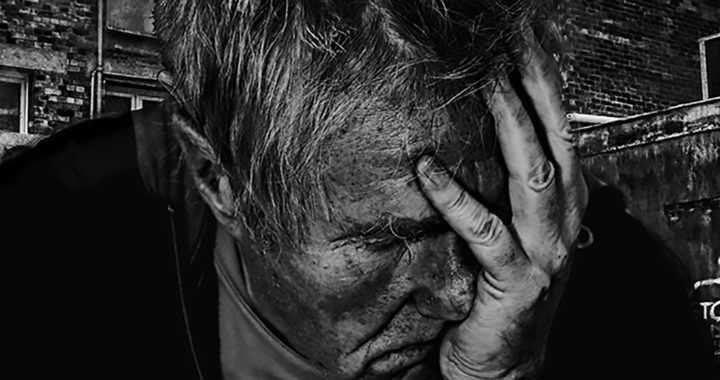Human death is inevitable due to the limitations in the human lifespan. However, according to several scientists, aging is a disease that can be cured. This proposition is both intriguing and promising because it not only attempts to push the limits of science and medicine but also challenges aging as a social construct. Aging remains a complicated topic. Scientists have been successful in increasing life expectancy through medical breakthroughs, and without a doubt, their purpose is unquestionable. However, these same breakthroughs have created social problems because they merely delayed human death without addressing the diseases that tag along with old age.
Why We Should Consider Aging As A Disease From A Sociological Perspective
Post-Mortal Society
Aging creates fear. This is understandable because old age is the new face of death according to Celine Lafontaine. She explained, in her journal article, that this fear comes from a cultural precept that emerged during the age of post-mortal society. This period marked the beginning of modern medicine and the predominance of industrialism. A young population in this society is more sustainable because younger individuals are more viable from a socioeconomic standpoint.
The pattern of age distribution should follow a higher number of younger individuals than older ones in an ideal society. Remember that this is considered more sustainable. But developments in medicine have created a demographic revolution according to Bruce C. Vladeck and James P. Firman. These advances, along with declining birth rates, have reshaped the typical pattern of age distribution, thus resulting in older individuals outnumbering the younger ones.
A population with a higher proportion of older individuals burdens modern societies. In countries with an aging population, such as Japan and South Korea, economic costs are worrisome. These costs include expenses related to healthcare services and other social services, as well as workforce imbalance. A modern society needs a younger population to partake in the labor market, sustain and advance economic activities, and fund various government programs.
Nonetheless, although science and medicine have increased life expectancy, the fact remains that people age, and this biological process would ultimately render them frail and thereby unfit to contribute to society. Ageism is also rampant and has been institutionalized through the so-called retirement age. Most countries allow companies to forego individuals between the age of 60 and 65. The labor markets across the world discriminate against old people.
Considering aging as a disease risks fueling the same fear that pervades in a post-mortal society and stigmatizing further older individuals. This proportion highlights the undesirable facts about growing old. However, considering its deeper merits, the notion that aging is a disease reflects the ongoing scientific undertakings and medical initiatives aimed at not only understanding better biological senescence but also extending lifespan and healthspan.
Curing Aging
If aging is indeed a disease, then there should be a cure. There are reasons to consider senescence as an ailment. For starters, as seen from aging individuals, several medical conditions emerge and worsen with age. Biology tells that the human body starts to degrade beginning in their 30s. Finding a workaround against this is perhaps the missing link that could redeem science and medicine from its failure to improve quality of life despite increasing life expectancy.
There are many benefits to curing aging. Imagine a world where people in what is considered old age can partake in the labor market. Advanced age could also mean presumed maturity of thought coupled with the accumulation of life experiences. Both offer value to society. A tireless society would allow the sustained or uninterrupted pursuit of scientific research or sociopolitical undertakings without the need to transfer knowledge by reeducating the younger population.
A viable cure for aging will not only expand the labor force but will also resolve several persistent issues related to sustainability. Costs costs associated with special healthcare and social requirements would be reduced or eliminated. There is no need to allocate resources for the older population. An aging population would not be a problem anymore. Furthermore, with birth planning in place, there would be true sustainability in age distribution and demographics.
Of course, some would argue that aging is a natural process. However, bioethicist Arthur Caplan has a sound argument. In his paper, diseases ranging from coronary atherosclerosis and cancer to tooth decay and clinical depression are nearly universal in their distribution. The occurrence of these diseases seems as if they are inevitable phenomena. Diseases are thereby no different from aging. Both result in the same outcome—the impairment of normal biological function.
FURTHER READINGS AND REFERENCES
- Caplan, A. L. 2005. “Death As An Unnatural Process.” EMBO Reports. 6(S1): DOI: 1038/sj.embor.7400435
- Lafontaine, C. 2009. “Regenerative Medicine’s Immortal Body: From the Fight Against Aging to the Extension of Longevity.” Body & Society. 15(4): 53-71. DOI: 1177/1357034×09347223
- Vladeck, B. C. and Firman, J. P. 1983. “The Aging of the Population and Health Services.” The ANNALS of the American Academy of Political and Social Science. 468(1): 132-148. DOI: 1177/0002716283468001009
